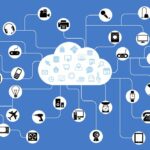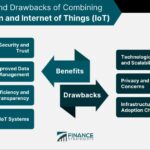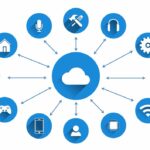The Internet of Things (IoT) is a network of interconnected devices that can communicate and exchange data with each other. These devices, often embedded with sensors and software, are capable of collecting and sharing information in real-time. The IoT has gained significant attention in recent years due to its potential to revolutionize various industries and improve our daily lives. However, like any technology, the IoT has its pros and cons. In this article, we will explore the advantages and disadvantages of the Internet of Things and discuss the challenges that come with its implementation.
Key Takeaways
- Improved efficiency and productivity
- Enhanced convenience and automation
- Cost savings and resource optimization
- Privacy and security concerns
- Interoperability and compatibility issues
What is the Internet of Things?

Definition of IoT
The Internet of Things (IoT) refers to the network of physical devices, vehicles, appliances, and other objects embedded with sensors, software, and connectivity, enabling them to collect and exchange data. These devices are highly anticipated to revolutionize various industries by providing real-time insights and enabling automation. By connecting everyday objects to the internet, IoT allows for seamless communication and data sharing between devices, leading to improved efficiency, productivity, and convenience.
How IoT works
The Internet of Things (IoT) is transforming industries by connecting everyday objects to the internet, allowing them to send and receive data. This enables these objects to be remotely monitored, controlled, and optimized. IoT works by using sensors, actuators, and connectivity technologies to collect data from the physical world and transmit it to the internet. The data is then processed and analyzed to derive insights and trigger actions. For example, in the manufacturing industry, IoT can be used to monitor and optimize production processes, improve maintenance efficiency, and enhance product quality. By leveraging IoT, businesses can achieve greater operational efficiency, cost savings, and innovation.
Examples of IoT devices
The Internet of Things (IoT) encompasses a wide range of devices that are connected to the internet and can communicate with each other. These devices can be found in various industries, including healthcare, transportation, and manufacturing. Some examples of IoT devices include smart thermostats, wearable fitness trackers, and connected cars. These devices collect and transmit data, allowing for remote monitoring, control, and automation. They offer numerous benefits, such as improved energy efficiency, enhanced safety, and optimized operations. Additionally, IoT devices can provide valuable insights and enable predictive maintenance. Organizations can leverage IoT technology to streamline processes, reduce costs, and improve overall performance.
Pros of Internet of Things

Improved efficiency and productivity
Improved efficiency and productivity are key benefits of the Internet of Things (IoT). By connecting devices and enabling them to communicate and share data, IoT technology streamlines processes and automates tasks, leading to faster and more accurate operations. For example, in a manufacturing setting, IoT sensors can monitor equipment performance in real-time, detecting potential issues and triggering maintenance alerts. This proactive approach minimizes downtime and reduces the risk of costly breakdowns. Additionally, IoT-enabled inventory management systems can optimize stock levels, ensuring that supplies are always available when needed. These advancements in efficiency and productivity have a significant impact on businesses, allowing them to operate more smoothly and effectively.
Enhanced convenience and automation
Enhanced convenience and automation are two key benefits of the Internet of Things (IoT). With IoT devices, tasks that were once manual and time-consuming can now be automated, saving users valuable time and effort. For example, smart home devices such as thermostats, lights, and security systems can be controlled remotely through smartphone apps or voice assistants. This allows users to conveniently adjust settings, turn on/off appliances, and monitor their homes even when they are away. Automation in industrial settings is also revolutionizing the way businesses operate. IoT-enabled sensors and devices can collect real-time data, optimize processes, and improve efficiency in manufacturing, logistics, and supply chain management. By leveraging IoT technology, businesses can streamline operations, reduce costs, and gain a competitive edge in the technology industry.
Cost savings and resource optimization
One of the key benefits of the Internet of Things (IoT) is its ability to enable cost savings and resource optimization. By connecting devices and systems, IoT allows for real-time monitoring and analysis of data, which can lead to more efficient use of resources. For example, in manufacturing, IoT sensors can track the performance of machines and identify potential issues before they become major problems. This proactive approach helps to minimize downtime and reduce maintenance costs. Additionally, IoT can optimize energy consumption by automatically adjusting settings based on usage patterns and environmental conditions. By leveraging IoT technologies, businesses can achieve significant cost savings and improve overall operational efficiency.
Cons of Internet of Things

Privacy and security concerns
One of the major concerns surrounding the Internet of Things (IoT) is privacy and security. As more devices become connected, there is an increased risk of unauthorized access to personal information and sensitive data. Hackers and cybercriminals can exploit vulnerabilities in IoT devices to gain access to networks and steal valuable information. Additionally, the collection and storage of massive amounts of data by IoT devices raise concerns about data privacy and how that data is being used. Organizations and individuals must take proactive measures to secure their IoT devices and networks, such as using strong passwords, regularly updating firmware, and implementing encryption protocols.
To address these concerns, industry standards and regulations are being developed to ensure the security and privacy of IoT devices and data. For example, the General Data Protection Regulation (GDPR) in Europe sets guidelines for the collection, storage, and use of personal data. It is important for individuals and organizations to stay informed about these regulations and comply with them to protect their privacy and mitigate security risks.
In addition to privacy and security concerns, another challenge in implementing IoT is the interoperability and compatibility of devices. With a wide range of IoT devices from different manufacturers, ensuring that they can communicate and work together seamlessly can be a complex task. Standardization efforts are underway to establish protocols and frameworks that enable interoperability between devices from different vendors. This will facilitate the integration of IoT devices into existing systems and promote the development of a cohesive IoT ecosystem.
Furthermore, the dependency on internet connectivity is another drawback of IoT. As IoT devices rely on internet connectivity to function and communicate, any disruption in the internet connection can affect their performance. This can be a concern in remote areas or during network outages. To mitigate this issue, alternative connectivity options such as cellular networks or satellite communication can be explored. Additionally, designing IoT systems with built-in redundancy and failover mechanisms can help ensure continuous operation even in the absence of internet connectivity.
In conclusion, while the Internet of Things offers numerous benefits, it is important to address the privacy and security concerns associated with it. By implementing robust security measures, complying with regulations, and ensuring interoperability and alternative connectivity options, the potential of IoT can be fully realized while minimizing risks and vulnerabilities.
Interoperability and compatibility issues
One of the major challenges in implementing the Internet of Things (IoT) is the issue of interoperability and compatibility. Interoperability refers to the ability of different IoT devices and systems to communicate and work together seamlessly. Compatibility refers to the ability of IoT devices to function properly with other devices and systems. The lack of interoperability and compatibility can hinder the widespread adoption and integration of IoT technologies.
To address these issues, industry standards and protocols have been developed to ensure interoperability and compatibility among IoT devices. For example, the MQTT (Message Queuing Telemetry Transport) protocol is widely used for IoT communication due to its lightweight and efficient nature. Additionally, organizations such as the Open Connectivity Foundation (OCF) are working towards creating a common framework for IoT interoperability.
However, achieving full interoperability and compatibility remains a complex task. The vast number of different IoT devices, protocols, and technologies make it challenging to ensure seamless integration. Furthermore, the rapid evolution of IoT technologies introduces new compatibility issues as older devices may not be able to support newer protocols and standards.
In conclusion, interoperability and compatibility issues pose significant challenges in the implementation of IoT. Addressing these challenges requires the development of standardized protocols and frameworks, as well as ongoing efforts to ensure backward compatibility and support for emerging technologies.
Dependency on internet connectivity
One of the major challenges of the Internet of Things is its dependency on internet connectivity. Without a stable and reliable internet connection, IoT devices may not function properly or may not function at all. This can be a significant drawback, especially in areas with limited or unreliable internet access. For example, in remote locations or during network outages, IoT devices may become temporarily or completely non-functional. This dependency on internet connectivity can limit the effectiveness and reliability of IoT solutions.
Challenges in implementing IoT
Complexity of IoT infrastructure
The complexity of IoT infrastructure is one of the key challenges in implementing IoT. IoT systems involve a wide range of interconnected devices, sensors, and networks, which can make the overall infrastructure highly complex. Collaboration among different stakeholders, including device manufacturers, network providers, and software developers, is crucial to ensure seamless integration and interoperability. This collaboration requires effective communication, coordination, and standardization efforts to overcome the challenges posed by the diverse nature of IoT devices and technologies. Additionally, the scalability of IoT infrastructure is another aspect that needs to be considered, as the number of connected devices continues to grow exponentially.
Data management and analytics
Data management and analytics play a crucial role in the successful implementation of the Internet of Things (IoT). With the massive amount of data generated by IoT devices, organizations need effective strategies to collect, store, and analyze this data. Data management involves organizing and structuring the data in a way that allows for easy access and retrieval. Analytics refers to the process of extracting valuable insights and patterns from the data to make informed decisions.
To effectively manage and analyze IoT data, organizations can employ various techniques and technologies. One approach is to use cloud-based platforms that provide scalable storage and processing capabilities. These platforms enable organizations to handle the large volume, velocity, and variety of IoT data. Additionally, machine learning algorithms can be applied to the data to uncover hidden patterns and trends.
In terms of analytics, organizations can leverage real-time analytics to gain immediate insights from IoT data. Real-time analytics allows organizations to monitor and respond to events as they happen, enabling proactive decision-making. Furthermore, predictive analytics can be used to forecast future trends and behaviors based on historical IoT data. This can help organizations make strategic decisions and plan for the future.
It is important to note that data management and analytics in the IoT landscape also bring challenges. Data privacy and security are major concerns, as IoT devices collect sensitive information. Organizations must ensure that proper security measures are in place to protect the data from unauthorized access or breaches. Additionally, data interoperability and compatibility issues may arise when integrating data from different IoT devices and platforms. Standardization efforts are necessary to enable seamless data exchange and collaboration.
In conclusion, data management and analytics are essential components of the Internet of Things. They enable organizations to harness the power of IoT data and derive valuable insights. However, it is crucial to address the challenges associated with data privacy, security, and interoperability to fully unlock the potential of the IoT and shape the future of risk assessment.
Regulatory and legal considerations
When implementing IoT solutions, it is crucial to consider the regulatory and legal aspects that govern the use of these technologies. Compliance with data protection and privacy regulations is of utmost importance to ensure the security and confidentiality of user information. Additionally, companies must adhere to industry standards and guidelines to ensure the interoperability and compatibility of IoT devices and systems.
To navigate the complex landscape of regulations, organizations should establish a comprehensive governance framework that outlines the roles and responsibilities of stakeholders involved in IoT implementation. This framework should address issues such as data ownership, consent, and liability to mitigate potential legal risks.
Furthermore, it is essential to consider the international legal landscape when deploying IoT solutions. Different countries may have varying regulations and requirements, which can impact the deployment and operation of IoT devices. Organizations should stay informed about the legal requirements in each jurisdiction to ensure compliance and avoid legal complications.
In summary, regulatory and legal considerations play a crucial role in the successful implementation of IoT solutions. By proactively addressing these aspects, organizations can ensure compliance, protect user privacy, and mitigate legal risks.
Conclusion
In conclusion, the Internet of Things (IoT) has both pros and cons. On the positive side, IoT offers numerous benefits such as increased convenience, improved efficiency, and enhanced connectivity. However, it also poses challenges in terms of security, privacy, and potential job displacement. It is important for individuals and organizations to carefully consider these factors before fully embracing IoT technology. Overall, while IoT has the potential to revolutionize various industries, it is crucial to address the associated risks and ensure proper safeguards are in place.
Frequently Asked Questions
What is the Internet of Things?
The Internet of Things (IoT) refers to the network of physical devices, vehicles, appliances, and other objects that are embedded with sensors, software, and connectivity, enabling them to connect and exchange data over the internet.
How does IoT work?
IoT devices collect data from their surroundings using sensors or actuators, which is then transmitted over the internet to a central system for processing and analysis. This data can be used to automate processes, monitor and control devices remotely, and gain insights for decision making.
What are some examples of IoT devices?
Examples of IoT devices include smart thermostats, wearable fitness trackers, connected cars, smart home security systems, industrial sensors, and smart appliances.
What are the pros of Internet of Things?
The pros of IoT include improved efficiency and productivity, enhanced convenience and automation, and cost savings and resource optimization.
What are the cons of Internet of Things?
The cons of IoT include privacy and security concerns, interoperability and compatibility issues, and dependency on internet connectivity.
What are the challenges in implementing IoT?
The challenges in implementing IoT include the complexity of IoT infrastructure, data management and analytics, and regulatory and legal considerations.




